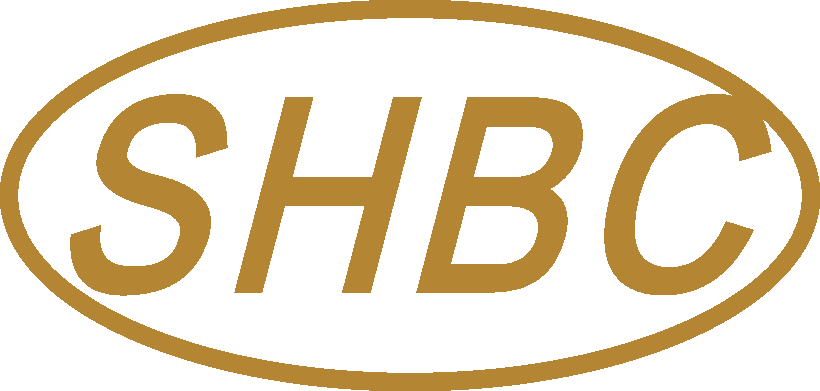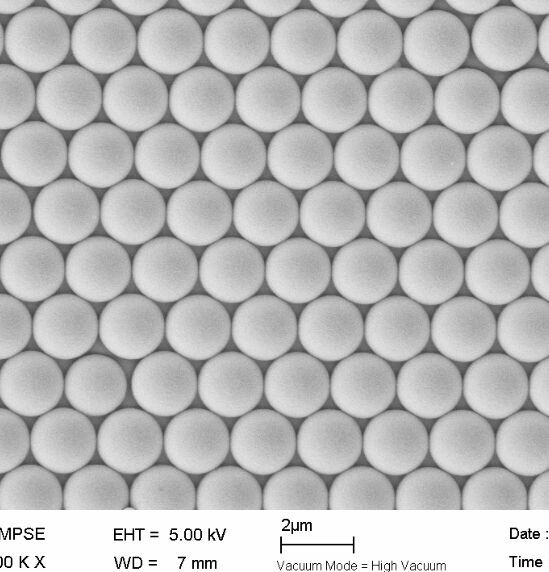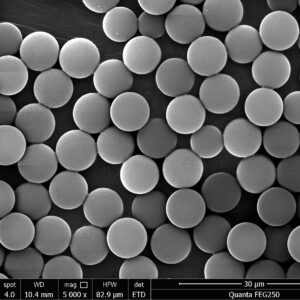Product Category
Hot Products
-
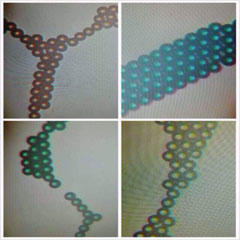 Fluorescent Carboxyl Microspheres
评分 0 / 5
Fluorescent Carboxyl Microspheres
评分 0 / 5 -
 PMMA Microspheres
评分 0 / 5
PMMA Microspheres
评分 0 / 5 -
 Silica Microspheres
评分 0 / 5
Silica Microspheres
评分 0 / 5 -
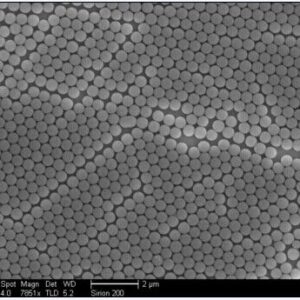 Immune Turbidimetric Microspheres
评分 0 / 5
Immune Turbidimetric Microspheres
评分 0 / 5
Quantum Dot Polystyrene Microspheres
Quantum dot polystyrene microspheres (HQD) are prepared by microemulsion polymerization of high-brightness CdSe/ZnS quantum dots and polystyrene. The surface of the microspheres is modified with carboxyl functional groups to facilitate antibody coupling. Amplifying the fluorescence signal of quantum dots through nanosphere coating can significantly improve the sensitivity of immune detection.
The fluorescent probe has the characteristics of stable fluorescence signal, excellent colloidal stability, and high biocompatibility, and is especially suitable for the development of fluorescent in vitro diagnostic reagents. . This product can also be used for blood flow measurement, biomarkers, in vivo imaging and calibration of flow cytometers.
I. Description of Quantum Dot Polystyrene Microspheres
Quantum dot polystyrene microspheres (HQD) are prepared by microemulsion polymerization of high-brightness CdSe/ZnS quantum dots and polystyrene. The surface of the microspheres is modified with carboxyl functional groups to facilitate antibody coupling. Amplifying the fluorescence signal of quantum dots through nanosphere coating can significantly improve the sensitivity of immune detection.
-300x237.png)
The fluorescent probe has the characteristics of stable fluorescence signal, excellent colloidal stability, and high biocompatibility, and is especially suitable for the development of fluorescent in vitro diagnostic reagents. . This product can also be used for blood flow measurement, biomarkers, in vivo imaging and calibration of flow cytometers.
Carboxylation-modified microbeads have a high density of free carboxylic acids on their surface, making them suitable for covalent coupling of proteins and other amine-containing biomolecules via water-soluble imine-based reagents such as carbodiimide (EDAC).
II. Physical data
1. Material: Polystyrene microspheres coated quantum dots
2. Refractive index: 1.59@589nm, 25℃
3. Density: 1.05g/cm3
4. Features: Fluorescent color
III. Analysis instructions
1. Solid content: 1% (10mg/ml)
2. Particle size: 100nm
3. Uniformity: C.V<5%
4. Emission wavelength: 610nm+10nm
5. Excitation wavelength: <580nm, 365nm-450nm is recommended
6. Dispersion medium: deionized water and trace amounts of surfactant
7. Stability: 2 years from the factory date
IV. Use of Quantum Dot Polystyrene Microspheres
The surface of our company’s quantum dot nanospheres (HQD610-10) is rich in carboxyl functional groups, which can be covalently coupled with amino-containing biomolecules, such as antibodies, peptides, nucleic acids, etc. The carboxyl groups on the surface of the microspheres are in the activator 1-( Under the action of 3-dimethylaminopropyl)-3-ethylcarbodiimide hydrochloride (EDC), it reacts with amino groups to form stable amide bonds, thereby covalently fixing biomolecules on the surface of nanospheres.
Precautions for use:
○1 Please vortex and mix QDNBs before use. A small amount of precipitation caused by long-term rest is normal and does not affect the use of the product.
○2 In order to achieve better coupling effect, the protein concentration should be 0.5-4mg/mL, the nucleic acid concentration should be 20-100 μM, and there should be no free amino groups in the buffer. In particular, Tris, glycine, acetic acid, and citric acid buffers cannot be used.
materials needed:
○1 Quantum dot nanosphere (10mg/mL).
○2 Reaction buffer (for activation): pH 4-6
○3 Activator: EDC·HCl.
○4 Blocking solution: 1-2% BSA or casein.
○5 Preservation solution (pH7.0-7.5): 20-100 mM boric acid or Tris, 0.9% NaCl, 0.5-1% BSA, 0.09% NaN3.
Reference coupling scheme
○1 Take about 50 μl of QDNBs suspension, disperse it in 450 μl reaction buffer, centrifuge at 12000-15000 rpm for 10-30 min, remove the supernatant, and disperse QDNBs in 500 μl reaction buffer.
○2 Add 100-50 μl of coupling agent EDC (10mM), mix at room temperature (25-37 degrees), and incubate for 0.5-1 h.
○3 Centrifuge at 2000-15000rpm for 10-30min to remove excess coupling agent, etc., then disperse in 500μl reaction buffer, and disperse with ultrasound;
○4 Then add about 100 μg of antibody (the ratio of antibody to microspheres needs to be optimized), mix at room temperature (25-37 degrees), and incubate for 0.5-1 h.
○51 Centrifuge at 2000-15000 rpm for 10-30 minutes to remove free antibodies, etc.;
○6 Add 500 μl of blocking solution, disperse with ultrasound (power 10-20%) for about 10 seconds, mix at room temperature (25-37 degrees), and incubate for 0.5-1 hour.
○7 Centrifuge, remove the blocking solution, and disperse in 200 μl preservation solution for later use.
This protocol is for reference only in the early stages of research. Researchers are asked to optimize the specific experimental conditions according to their own projects.
| Product Number | Product Name | Particle Size |
| HQD610-150 | Quantum Dot Nanobeads | 150nm |
| HQD610-10 | Quantum Dot Nanobeads | 100nm |
相关产品
-
Hot Sale products
Amine Magnetic Beads
-
Hot Sale products
Carboxy Magnetic Beads
-
Hot Sale products
Streptavidin Microspheres
-
Hot Sale products
Nickel Magnetic Beads
